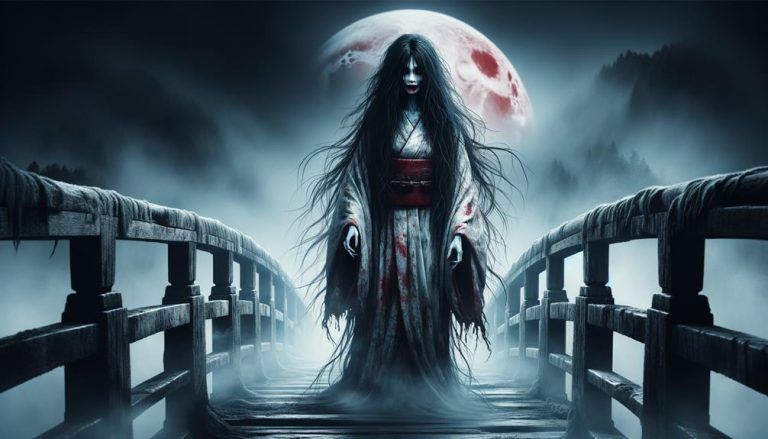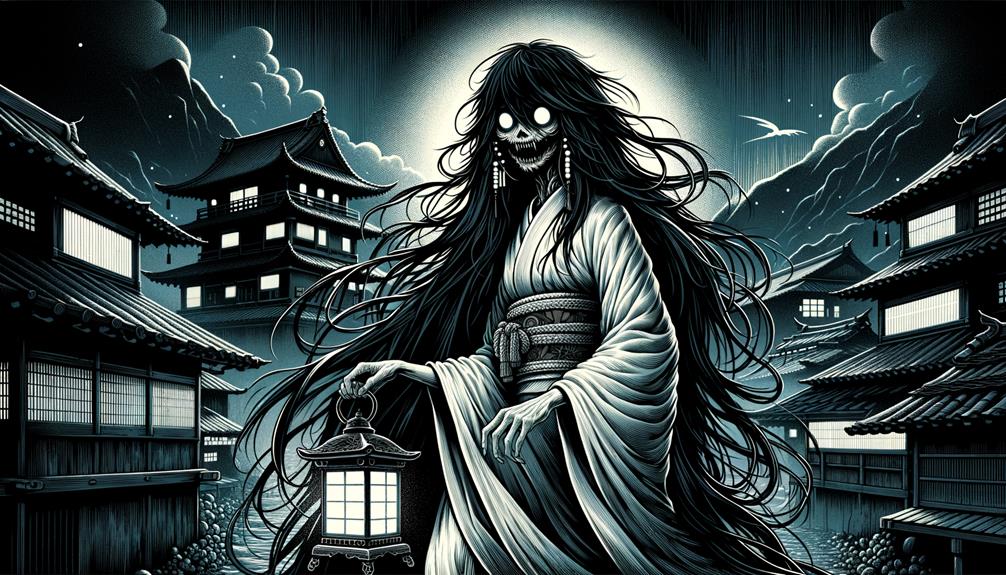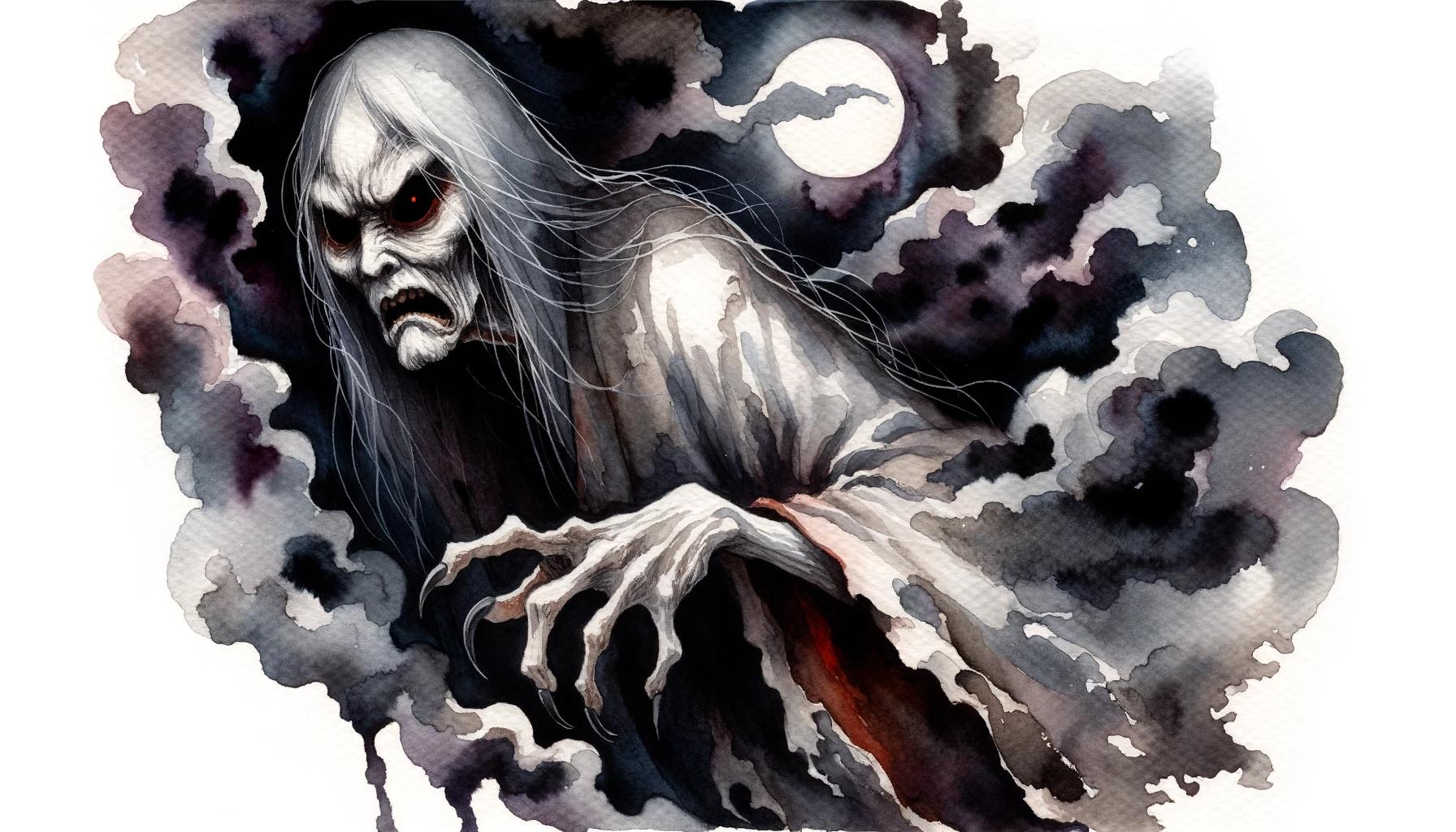Have you ever wondered about the unseen forces that might linger, seeking retribution for past wrongs? Japanese folklore, it turns out, is rich with tales of such entities, often called onryō. These aren't just spooky stories for a dark night; they represent a deep-seated belief in justice, or the lack of it, that can transcend life itself. Today, we're going to explore what we might call an "onryo test," not as a medical procedure, but as a way to understand and identify these powerful, wrathful spirits.
You see, much like how a PSA test is used to check for certain health markers, we can look at the characteristics and behaviors attributed to onryō in traditional beliefs to discern their presence or influence. It's a way, in some respects, to conceptually "screen" for the signs of their haunting. This exploration helps us grasp the cultural impact and enduring appeal of these legendary figures, which, like some old beliefs, still hold a kind of power in our imaginations, even now.
So, let's take a closer look at these intriguing spirits. We will talk about their origins, what they do, and how their actions create a distinct pattern. This pattern, arguably, acts as a sort of "test" for their presence, making their stories very, very compelling and a bit chilling, too.
Table of Contents
- What Are Onryō? A Folklore Primer
- The Nature of the Onryō Curse
- The Onryō Test: Signs of a Vengeful Spirit
- Onryō in Modern Culture and Beyond
- Frequently Asked Questions About Onryō
What Are Onryō? A Folklore Primer
Onryō, a term that sounds a bit spooky, comes from Japanese words. It means "vengeful spirit" or "wrathful spirit," and that's just what they are. These spirits, in traditional beliefs of Japan and in literature, are a type of mythical creature from Japanese folklore. The term “onryō” is derived from the Japanese words “on” meaning vengeful and “ryō” meaning spirit. While the exact origin of onryō stories can vary, they all point to a powerful desire for payback.
The concept of the onryō in Japanese mythology is that of a vengeful spirit seeking retribution for a perceived injustice in their past life. These spirits are primarily depicted as women who met a sad end, often due to betrayal or a great wrong. In Japanese mythology, an onryō is a wrathful spirit, which roams the earth to take vengeance. It’s an unfulfilled and unsatisfied soul that has been wronged. This idea, you know, of a spirit not finding peace, is a powerful one across many cultures.
Onryō are believed to be the souls of individuals who have died with unresolved anger. This deep, burning anger is what keeps them tied to the living world. They are not just ghosts that float around; they are actively seeking to right a wrong, and their methods can be quite terrifying. Basically, they're like a cosmic force of rage that just keeps going, even after life has ended.
The Nature of the Onryō Curse
What makes an onryō particularly fearsome is the kind of trouble they cause. Onryō inflict a terrible curse on the people or places that they haunt. This isn't just a simple haunting; it's a deep, destructive force. The curse can be transmitted to others like a contagious disease, creating a circle of death and destruction far more widespread than just the original target. So, it's not just about one person; it can spread, which is a bit scary to think about, actually.
This idea of a curse spreading like an illness is a very chilling part of their lore. It means that simply being near an onryō, or someone affected by one, could put you at risk. This makes the "onryo test" more about recognizing the patterns of misfortune and widespread suffering that might follow in their wake. It’s a sign, you know, that something deeply wrong is at play.
Onryō stories are supernatural, but they often deal with real royal machinations, corrosive jealousy, and crimes of passion, culminating in a cosmic rage that transcends life and death. The core of their power comes from this intense, personal suffering. It’s a very human element, even for a spirit, and that's what makes their tales so enduring, really.
The Onryō Test: Signs of a Vengeful Spirit
So, if we were to conduct an "onryo test" – a way to discern if an onryō might be involved in a situation – what would we look for? It's not a blood test, obviously, but a way of examining the patterns and events that match the folklore. This conceptual test helps us understand the characteristics of these spirits. It’s a bit like trying to figure out if a story fits a certain type of tale, you know?
Much like how a PSA test helps screen for prostate cancer, our "onryo test" looks for specific indicators. PSA is a protein produced in the prostate, and its levels can hint at an issue. Similarly, the "onryo test" looks for the "proteins," or signs, of a vengeful spirit’s presence. This approach helps us see the patterns in the stories. You could say it’s a way of checking for the spiritual equivalent of a "red flag."
While originally touted as a revolutionary tool for early detection, the widespread use of the PSA test has been tempered by recognition that it’s not always a perfect indicator. The same could be said for our "onryo test." It’s a framework, a guide, not a definitive diagnosis. It helps us explore the stories and beliefs surrounding these spirits in a more structured way. It’s about looking at the bigger picture, in some respects.
Unresolved Anger and Injustice
A key part of the "onryo test" is looking for a history of deep injustice. Onryō are, at their core, unfulfilled and unsatisfied souls that have been wronged. Their vengeance stems from a perceived injustice in their past life. This means if strange things are happening, and there's a history of someone being treated very unfairly, especially someone who died with a lot of anger, that's a big indicator. It’s like a primary symptom, you could say.
For instance, the "My text" tells us about an onryo who murdered a young bride by horrifically decapitating her. This act of extreme violence, particularly against someone innocent, points to a profound wrong committed against the spirit in its former life. The spirit's actions are a direct response to its own past suffering, so you look for that kind of backstory. This is a crucial step in our conceptual onryo test.
The concept of onryo, vengeful spirits, has deep roots in Japanese mythology and folklore. They are believed to be the souls of individuals who have died with unresolved anger. So, when applying the "onryo test," you'd investigate if there's a historical grievance that aligns with the spirit's actions. It’s about connecting the dots between past wrongs and current troubles, which is a bit like detective work, you know?
The Spread of Misfortune
Another crucial element of the "onryo test" is observing how misfortune spreads. Onryō inflict a terrible curse, and this curse can be transmitted to others like a contagious disease, creating a circle of death and destruction. If problems seem to be spreading from one person or place to another, affecting many people, it could be a sign. This is different from isolated incidents; it’s about a spreading blight, apparently.
Think of it like this: if you see a series of unfortunate events, or even illnesses, that seem to jump from person to person without a clear cause, that's a characteristic sign of an onryō's curse. It's not just bad luck for one person; it's a ripple effect of negativity. This widespread impact is a major part of what makes these spirits so terrifying, and a key point in our "onryo test."
The watchmen saw the ghost departing the samurai’s house and bravely gave chase with their weapons, which suggests the onryo's presence was clear and its effects noticeable enough to warrant pursuit. The visible departure of the spirit, and the subsequent chase, hints at the tangible, albeit supernatural, impact it had on the village. This kind of widespread recognition of a negative presence is a very telling sign, too.
Extreme Wrath and Violence
Finally, the "onryo test" would also look for signs of extreme wrath and violent acts. Vengeful spirits in Japanese folklore within the mystical realm of traditional Japanese folklore, the onryō, notoriously known as vengeful spirits, relentlessly pursue justice for the wrongs they suffered. Their actions are not subtle; they are often marked by intense, destructive displays of anger. The example of the decapitated bride is a stark reminder of this extreme nature.
The rage of an onryō is not just emotional; it manifests in tangible, often horrifying ways. If a situation involves unexplained, brutal acts or a sense of overwhelming, destructive anger, it aligns with the characteristics of an onryō. This cosmic rage, which transcends life and death, is a hallmark of their presence. It's a very clear sign, in a way, that something truly powerful and angry is at work.
While a prostate biopsy is still the most accurate way of determining if a person has prostate cancer, and both prostate cancer and several benign conditions can affect PSA levels, our "onryo test" similarly looks for a combination of factors. Just as PSA levels alone aren't enough, one strange event isn't enough to point to an onryō. You need the whole picture: the injustice, the spreading curse, and the extreme wrath. Learn more about tests for prostate cancer here, for a real-world comparison of diagnostic processes.
Onryō in Modern Culture and Beyond
The concept of the onryō has stayed relevant through the ages, even into our modern world. You see their influence in countless horror films, books, and video games from Japan and beyond. The characters in these works often embody the classic traits of an onryō, showing how deeply this folklore has affected popular culture. This enduring presence, you know, keeps the idea of the "onryo test" alive in a metaphorical sense, as we keep trying to understand these figures.
The continued fascination with onryō shows that the themes they represent – injustice, vengeance, and the lingering power of strong emotions – are universal. They tap into our fears about unresolved issues and the consequences of wrongdoing. This means that while we might not literally perform an "onryo test" in a lab, we are constantly, in a way, testing our understanding of these powerful stories and their meaning. Learn more about Japanese folklore on our site, for example.
It’s important to try to always use the same lab for all of your PSA tests because PSA levels can vary between labs. Similarly, when we think about the "onryo test," we should look for consistent patterns in the folklore. The Prostate Cancer Foundation says, "Should I use the same lab for all my PSA tests?" This idea of consistency also applies to how we interpret cultural stories. We look for the common threads that define an onryō, ensuring our "test" is based on consistent traditional beliefs. Also, you can find more insights on this page about spiritual beliefs.
Frequently Asked Questions About Onryō
What makes an onryō different from other Japanese ghosts?
Onryō are different because their main goal is vengeance for a specific wrong they suffered in life. While many Japanese ghosts might just haunt a place, an onryō actively seeks retribution, often inflicting curses that spread. They are driven by a very strong, unfulfilled anger, which sets them apart, typically.
Can an onryō's curse be stopped?
In folklore, stopping an onryō's curse often involves appeasing the spirit or resolving the injustice that caused their anger in the first place. This can be very difficult, sometimes requiring rituals or sacrifices. It’s not a simple thing to do, as their rage is quite deep, you see.
Are all onryō women?
Most onryō are depicted as women, often those who suffered greatly due to betrayal or violence. However, there are some stories of male onryō as well. The common thread is the profound injustice and unresolved anger, regardless of gender, that drives them, apparently.



Detail Author:
- Name : Bartholome Walter IV
- Username : fisher.jalyn
- Email : bruen.meghan@grady.info
- Birthdate : 1981-05-29
- Address : 7746 Wisozk Ferry Kuphalport, ND 58016
- Phone : +15598781610
- Company : Goodwin Group
- Job : Shipping and Receiving Clerk
- Bio : Voluptas eveniet non totam quos excepturi sed inventore. Aliquid officiis quibusdam inventore aut est amet quia. Corporis ullam temporibus possimus itaque exercitationem rem.
Socials
facebook:
- url : https://facebook.com/aniya_official
- username : aniya_official
- bio : Iste laborum eaque quae et suscipit consequuntur.
- followers : 6230
- following : 1348
twitter:
- url : https://twitter.com/aniya.miller
- username : aniya.miller
- bio : Omnis consequatur in corrupti ut. Rem rerum nisi repellat ipsa dolorem. Reprehenderit sunt quo ipsum.
- followers : 6850
- following : 1321



























